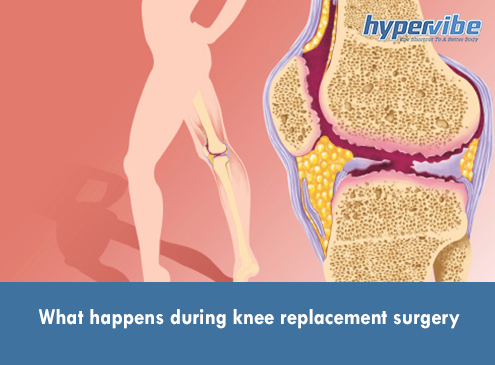
Knee replacement surgery or arthroplasty is a surgical procedure performed for replacing a worn or damaged knee with an artificial one.
More common in seniors, the procedure may also be recommended to athletes and people who have demanding jobs, that involve lifting heavy weights, as this puts a lot of stress on the knee joint.
People who suffer from osteoarthritis or rheumatoid arthritis are more likely to need knee replacement surgery, chronic knee pain and disability resulting from arthritis being the most common reasons for undergoing this procedure.
Also, gout, bone dysplasia, avascular necrosis in the knee joint, as well as traumatic injuries, fractures of the bones that support the knee, or the wear and tear of the ligaments or cartilage that form the knee join can lead to pain and limited knee function, and can be good reasons for having a knee replaced.
In osteoarthritis, the cartilage in the knee joint, which is the tissue cushioning the bones, wears away or becomes too soft, and this causes the bones to rub against one another and lead to stiffness and pain that can be severe. In rheumatoid arthritis, the synovial membrane that surrounds the knee joint becomes inflamed and thicker than normal, so again one accuses pain, joint stiffness and limited movement.
Not every person who suffers from one of these types of arthritis needs knee replacement surgery, but if the knee joint becomes too damaged and one’s mobility is reduced, or if one accuses pain even while resting and doing simple movements like walking, then a surgical intervention may be necessary.
During the knee replacement intervention, the surgeon removes only those parts of the knee joint that are damaged. Then, the bones are shaped to hold the artificial joint, which is attached to the bones using special cement or another material that is compatible with the human body.
The artificial prosthesis can be made of plastic or metal, and it should restore the weight-bearing portion of the joint, relieving the pain and allowing the patient to move freely. The new joint should be kept in place not only by the bones and cement but also by the surrounding muscles and ligaments, so if those are also damaged, a more complex intervention may be required.
The knee arthroplasty procedure does not involve the replacement of the blood vessels that supply the joint with blood, and all the parts of the joint that are healthy and still functional will be kept there, so the doctor will only replace the damaged components.
For most patients this is enough and as long as the joint isn’t put under too much stress or strain, the artificial prosthesis should last for 15-20 years. The procedure is carried out regularly in the U.S., more than 600,000 patients receiving new knee joints every year, so it’s a common and safe intervention.
The knee replacement surgery can be partial or total. In the partial intervention, only one side of the joint is replaced, so the recovery period is shorter and the risk for complications is also more reduced. In the total intervention, both sides of the joint are replaced, and complications are more likely to occur, although the risk is still reduced.
The most common complications include infections of the wound or of the joint replacement, the latter needing a second intervention, then damage of the ligaments, blood vessels or nerves around the knee joint, an increased stiffness of the replaced knee, or persistent pain. Unexpected bleeding, blood clots and fractures of the bones surrounding the joint can also occur.
Rarely, pieces of fat from the bone marrow may enter the bloodstream and be transported to the lungs, where they can cause severe breathing problems. Also, if the nerves that surround the joint are pressed by the prosthesis, swelling and numbness of the area can occur.
In some cases, more commonly in women with osteoporosis, the replaced joint may become loose, or the bones may break. But even in healthy adults the replacement parts can become loose, and will need to be replaced. These issues can be prevented by avoiding tasks that are repetitive or put too much pressure on the joint, as well as movements like squatting and kneeling.
To speed up recovery, you should avoid pivoting or twisting the knee, and should keep the leg extended and straight when sleeping or lying in bed. Undergoing physiotherapy is also recommended, while not following any recovery program can cause the joint to dislocate, because the muscles and ligaments that support the knee are still weak in the first weeks post surgery.
Have something to add to this article? Comment below or join our Facebook community and share your thoughts with us.

Here’s how we use a vibration plate for weight loss...

Many people, especially beginners, notice an itchy or tingling “pins-and-needles”...

Yes, Vibration Plates or Whole Body Vibration (WBV) platforms, promote...

Are vibration machines bad for you? Yes, if used incorrectly....

The lymphatic system, also called the lymphoid system, is an...